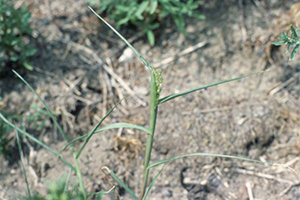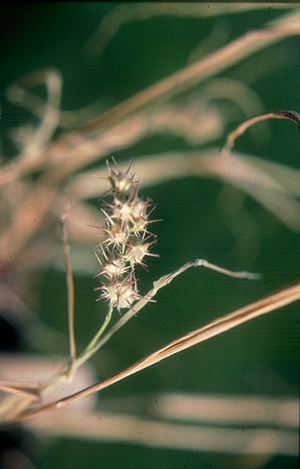Extension > Garden > Diagnose a problem > Is this plant a weed? > Grass > Longspine Sandbur
Longspine Sandbur
Cenchrus longispinus (Hack) Fern.
Found in:
- Lawns and landscape beds
Characteristics:
- Annual grass that grows best during warm temperatures (summer)
- Coarse-textured, light green, clump-forming plant
- Stems (tillers) grow along the ground before turning upward in mature plants
- Stems may root at joints (nodes) where they touch the ground
- Leaf blades are light green, flattened, sometimes coiled and may be rough to the touch
- Flower stalks are coarse and wiry with swollen nodes (joints)
- Spike-like flowers consist of several round, hairy, upward pointing burs
- Roots are fibrous; no underground stems (rhizomes) produced
Significance
- Increase moisture to favor desired lawn grasses as this plant thrives in warm, dry sites
- Maintain minimum 2 1/2 -3” mowing height and good turfgrass density
- Causes mouth blisters in horses






